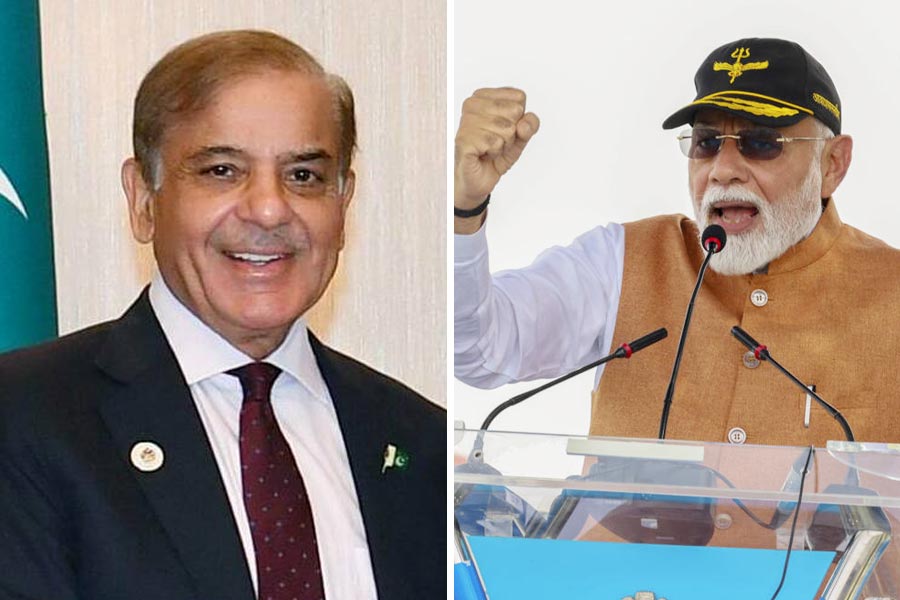
The one rationale for demonetization that was commonly accepted as legitimate was its presumed attack on 'black money'. The other two reasons advanced for it by the government, namely eliminating counterfeit currency and facilitating the move to a cashless economy, scarcely carried credibility. The total value of counterfeit currency was minuscule: a study by the Indian Statistical Institute and the National Investigation Agency put it at only Rs 400 crore, or 0.022 per cent of the total value of currency in the country. And tagging the move towards a cashless economy as an argument for demonetization was neither ethically nor practically defensible.
It was ethically indefensible since the government was not only forcing people's choice of the medium of circulation, but was also pushing them from costless transactions, which cash transactions are, towards costly transactions, owing to charges by banks and fintech companies on digital and other non-cash transactions, and, thereby, boosting the latter's profits at the expense of the people. It was also practically indefensible because given the poor connectivity and literacy among the people, digitization of transactions was a pipe dream.
Combating black money, however, appeared both desirable and pressing, and the case for demonetization towards this end a plausible one. Here the argument went as follows. With demonetization, while the honest people would come to banks to exchange or deposit their old currency, the black-money operators would not for fear of exposing themselves to investigation; hence the large amount of currency held in the black economy would simply get extinguished, dealing a huge blow to this economy. The government reportedly thought that Rs 3.5 lakh crore held in the black economy would thus get extinguished.
Critics argued that the actual value of extinguished currency would be a lot less, and that even if this entire amount got extinguished, given the size of the black economy, it would be no more than a pinprick for this economy that would scarcely cripple it. But the basic point was this: a measure of the capacity of demonetization to disable the black economy was the value of the currency it extinguished. The greater this value, the greater was the blow against the black economy, according to the government's argument.
So confident was the government about the capacity of demonetization to extinguish sizeable amounts of currency that it even started talking about how this extinguished currency, entailing a reduction in the liability of the Reserve Bank of India and hence a windfall gain for it, would accrue to the RBI's owner, the Government of India, and how the latter could distribute it among the people, thereby converting seized black money into a gift for the people.
With December 30 - the date by which old currency should have been turned in - gone, we can now see how much of the demonetized currency has been extinguished. And it is a trivial amount. About 97 per cent of the demonetized currency has come back to banks, either to be exchanged for new notes (which was unilaterally, arbitrarily, and illicitly discontinued well before the deadline) or to be deposited. Of the Rs 15.4 lakh crore of currency that was demonetized, just about forty-odd-thousand crore, according to the RBI, have got extinguished. Since this amount also includes what people who have nothing whatsoever to do with the black economy have lost owing to their inability to make it to the banks on time, the loss to the black-economy operators alone is only a fraction of it, which is a trivial sum. Against the Rs 3.5 lakh crore the government was reportedly expecting to be extinguished in the black economy, the actual extinction is virtually zero.
Hence, by the government's own argument, using its own criterion, the effect of demonetization on the black economy has been virtually nil. The figure of 97 per cent of demonetized currency returning to banks has been so embarrassing for the government that even though this figure has come from the RBI, the government has used all kinds of subterfuges to contest it. It is claiming now that until figures are properly checked, nothing can be said about how much has returned to banks which suggests, ominously, that the final figures may get 'doctored' appropriately.
Thus, on the main argument in its favour that carried some credibility, demonetization has been a total failure. A spate of investigations of suspicious transactions, raids on suspicious premises and arrests of persons suspected of dealing with black money, has occurred to suggest that the government is attacking the black economy. Whether all this hullabaloo is a mere sham is irrelevant. The point is that it has nothing to do with demonetization. It could have occurred anyway, without demonetizing 86 per cent of the country's currency whose contribution to this activism is absolutely nil.
Demonetization's contribution to combating the black economy is thus negligible. All it has succeeded in doing is transferring a huge amount of cash from the public, in whose hands it was being used largely as a means of circulation, to the coffers of banks where it is lying idle. This causes, on the one hand, a reduction of output in the real economy because of a shortage of cash. In the C-M-C circuit, of commodities being sold for money, which is then used to buy other commodities, the impounding of money in the middle affects the demand for commodities since it amounts to impounding purchasing power; simultaneously it also affects the purchase of inputs with this money which lowers supply. For both these reasons, there is, inevitably, a reduction in output.
This reduction occurs primarily in the cash-using informal economy, but because of the reduced demand of the informal economy for the goods of the formal economy, there is a reduction in the output of the latter as well, which gets further magnified by 'multiplier effects', even though cash shortage per se may not affect the formal sector.We, therefore, have an economy-wide reduction in output owing to the cash shortage arising in the informal sector.
All this is well-known and has been much written about. What is less written about is that the cash accumulated in bank vaults also poses a problem. Since banks have accepted these deposits, they have to pay interest on them to the depositors. But cash in their coffers earns nothing. Banks' profitability, therefore, gets eroded. They can, of course give out more loans, but banks' lending to those whom they consider 'creditworthy' borrowers was not constrained by any shortage of funds with them to start with (since they could always borrow cash from the RBI under the latter's repo operations to meet the credit demand of such borrowers); and, now, with a recession afflicting the economy, this credit demand from 'worthwhile' borrowers shrinks because of which any larger credit disbursement by them is unlikely.
To bail out banks in this situation, the RBI can sell them government securities against the cash they hold which would mean shifting income-earning assets from itself to commercial banks, boosting the latter's profits while reducing its own. This is a net revenue loss for the government (since the RBI's profits, as already mentioned, constitute the government's income). But so large is the idle cash with banks that the RBI would run out of government securities for sale to them for soaking up this cash. Hence, it is now putting into practice something which it had once done when a lot of foreign exchange had come into the country and the banks, consequently, had seen a huge influx of cash that had been given to those bringing in such foreign exchange. And this is to issue not real but artificial government securities.
What the RBI does is to sell specially-created government securities, whose sale proceeds the government cannot use for spending, but on which the government pays an interest that comes out of the budget. In effect,the government simply pays an interest to the banks for the huge cash they have accumulated, which is now transferred to the RBI, even while not using that cash for its own spending (for if it did, then the fiscal deficit would go up, displeasing globally-mobile finance capital that is always opposed to fiscal deficits). Even assuming that six lakh crore of cash are held by banks, then, at 6 per cent interest, the budget would have to cough up Rs 36,000 crore to the banking system, all because of Narendra Modi's folly.
When new notes are printed to fully replace the demonetized ones, banks should no longer be flush with cash and this problem should disappear. But the government does not plan full replacement of old by new notes because Modi wants to push people into a cashless economy.
The author is Professor Emeritus, Centre for Economic Studies, Jawaharlal Nehru University, New Delhi










